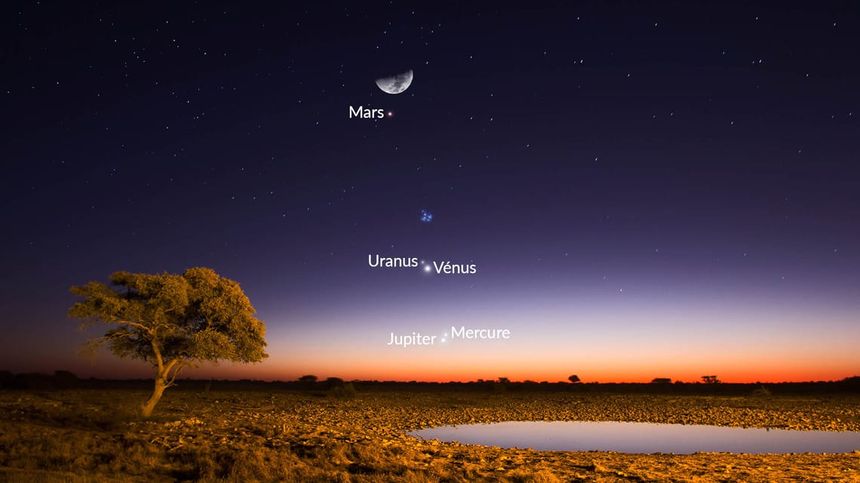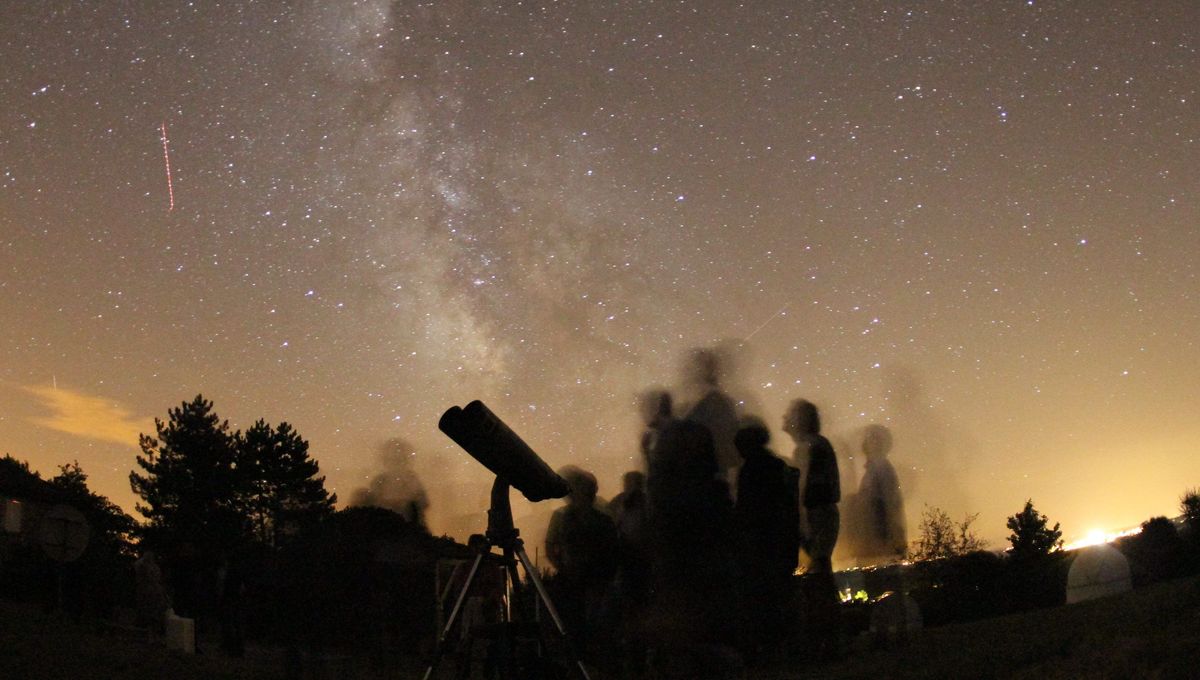Raise your eyes to the sky after sunset and contemplate the spectacle. Since March 25, we can distinguish the planets Jupiter, Mercury, Venus, Uranus and Mars aligned in the sky. But the phenomenon will be much better visible from Monday evening and especially Tuesday, when the conditions will be optimal in the night sky.
As explained
the StarWalk specialized site : “Planetary alignment is the astronomical term used to describe the fact that multiple planets approach one side of the Sun at the same time.” The planets will beall visible in the shape of an arc”said former Apollo astronaut Buzz Aldrin on Twitter.
To view this Twitter content, you must accept cookies Social Networks.
These cookies make it possible to share or react directly on the social networks to which you are connected or to integrate content initially posted on these social networks. They also allow social networks to use your visits to our sites and applications for the purposes of personalization and advertising targeting.
Visible to the naked eye
“Much of it will be visible to the naked eye, even in urban areas with heavy light pollution”says CNN Cameron Hummels, computer astrophysicist at the California Institute of Technology. “And it can be spotted in the northern and southern hemispheres.” The ideal conditions for observation: a clear sky and a good view of the horizon. First you have to find Venus, with the naked eye. It’s simple, “the evening Star” is the third brightest object in the sky after the Sun and the Moon, and it is the first to be distinguished after sunset.

Sparkling Venus and Jupiter
Not far from Venus, you can observe Uranus, with meticulousness. A pair of binoculars or a telescope can be helpful in spotting this planet. Jupiter and Mercury will be visible for a short time, near the horizon, between 20 and 30 minutes after sunset. Like Venus, Jupiter shines brightly.
“Wait until the sun has set, then get out and look low at that bright part of the sky where the sun has just set with binoculars, and you should see a brighter Jupiter next to a fainter Mercury”said Rick Fienberg, editor of Sky & Telescope magazine
on the American radio NPR. Once you’ve spotted those four planets, draw a straight line upwards and you’ll come across Mars, near the Moon, with its usual reddish glow.
Apps to find your way around
If you have trouble finding your way around the sky, an application can help you:
SkyTonight And
SkySafari. Once pointed in the sky, it guides you and displays the constellations. Other planetary alignments will take place by the end of the year. In a month, Mercury, Uranus, Venus and Mars should align.
On April 24, it will be the turn of Mars, Venus, Uranus and Mercury to come together. Last summer, from the northern hemisphere only, astronomers were able to contemplate an almost similar alignment: Mercury, Mars, Jupiter, Saturn and Venus. It was a first for 18 years. The phenomenon must reproduce itself in 2040, at best.

